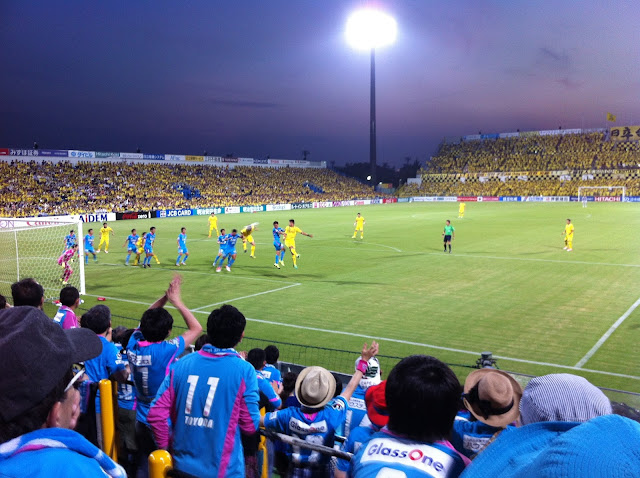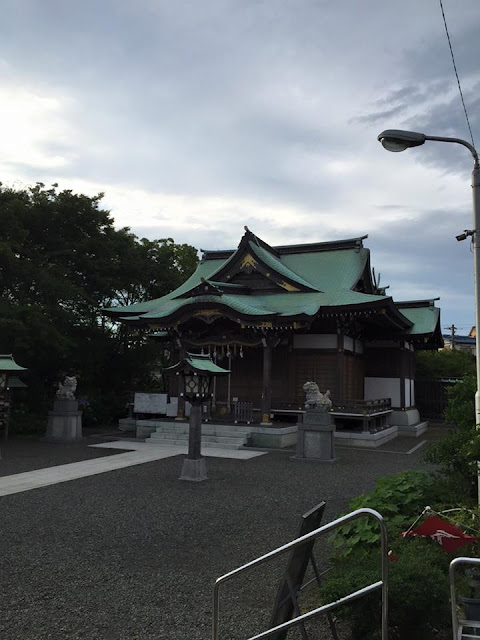7/19
Saying you're going to Gifu in Japan is a bit like saying you're going to Washington in the States—there's a certain amount of ambiguity (especially if you don't live in either the PNW or the Chesapeake Bay area) as to whether you're visiting the city or the state. Gifu is a mountainous prefecture in central Japan, historically significant for its location linking northern and southern Honshu. Its capital, also named Gifu, is a city of under half a million people, with a moderate tourism draw to historical sites such as the reconstructed sengoku-era Gifu castle. The mountain town of Takayama to the north also draws a few tourists to its hot springs an historic architecture.
So when I told people in Tokyo that I was spending a weekend in Gifu-shi, I got a few raised eyebrows. I went to visit my old host family, with whom I stayed for a week when I visited Japan three years ago. Since then, a lot has happened, including my learning some Japanese. The Nagayas were very kind to me, and my first experience in Japan largely motivated my effort to learn the language and return. I travelled to Gifu by kousokubasu (高速バス), or highway bus, and returned by shinkansen (新幹線), the bullet train, about which I will write a separate post if I have time.
One reason I visited the Nagayas was to observe an important family occasion; out of respect for the family's privacy I won't write about this without their permission. However, there was some time to explore the city and sample some wonderful food.
Cormorant Fishing
Gifu has historically been known in Japan for cormorant fishing, which produces high-quality sweetfish from the Nagara river. A few families still practice the craft, although the industry seems to have more cultural than economic value. There are at least two museums dedicated to cormorant fishing, which I found mildly interesting.
Gifu Castle
Much more exciting (to me, anyway) was Gifu Castle, a late-era mountain castle used as an early stronghold by Oda Nobunaga and reconstructed sometime in the last hundred years.
As I mentioned earlier, Gifu was an important strategic crossroads during the Sengoku era along the Nakasendo highway linking the Kansai plain (the major cities of Osaka and Kyoto) to northern Japan. Oda Nobunaga demonstrated this strategic value when he used Gifu Castle as an early home base in his audacious campaign to unify Japan under one rule. In its heyday in the late 16th century, Gifu Castle would have been one of the last and largest mountain castles in Japan.
The reconstructed keep is accessible by a few formidable-looking hiking trails from the base of the mountain and by an aerial tram that runs between Gifu park at the base and the castle grounds at the top. Even the view from the tram was spectacular.
 |
| Gifu in the calm of a storm. Near center (green-roofed building) is Gifu Kita high school, where I attended for a week during my first visit to Gifu. |
From a dilettante historian's perspective, I found the castle itself slightly disappointing. It has been destroyed twice—once during the political upheaval accompanying Tokugawa Ieyasu's rise to power, and again during the firebombings of World War II. As a result, very little remains of the original castle, and the reconstruction seems to have favored appearance over historical authenticity. The keep has been constructed as a donjon from the outside, but inside is built more or less like a vertical museum, with various collected artifacts lining the walls and a staircase in the center. Next to the keep is a small museum in the same architectural theme featuring a more artifacts from the sengoku period. Aside from my disappointment at not being able to explore a true mountain castle, however, the visit more than delivered with a spectacular panoramic view of the city below.
 |
| The donjon. |
Haute Cuisine
Though I promised not to write about family affairs, I feel comfortable—obliged, even—to recall the lunch reception organized by the Nagayas for the extended family. I think it must be extremely unusual for a guest, especially a foreigner, to be invited to these family events, and the Nagayas were very generous to invite me to attend. The meal was served in fourteen small courses of many different varieties of Japanese cuisine, pretty to behold and even better to taste. My favorites were two slices of ootoro (fatty tuna) sashimi, a small grilled shellfish in a mother-of-pearl shell, and a fruit tart dessert which I was probably too full to appreciate completely. I chatted with Ryousuke, my host brother, and a few of his young cousins about school life in Japan.





















